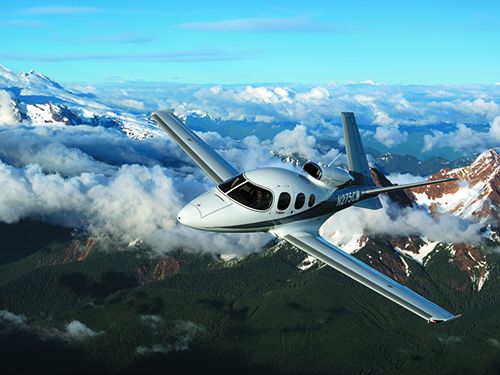
Cirrus Aircraft has never been one to let its product line go stale and like its SR piston line, has been making incremental improvements and tweaks to its SF-50 single-engine jet.
It’s tough to believe, but the company has populated the market with close to 300 Vision Jets since earning the type certificate back in 2016. In 2019, the G2 model came along, equipped with RVSM and a 31,000-foot operating ceiling, a quieter passenger cabin, plus the Garmin Perspective+ avionics suite with Safe Return—a version of Garmin’s emergency Autoland.
For 2021, Cirrus brings the G2+ Vision Jet, with a boost in takeoff power and airliner-caliber cabin Wi-Fi from Gogo. I recently caught up with Cirrus’ Matt Bergwall on a blazing hot summer day in New England for a flight demo.
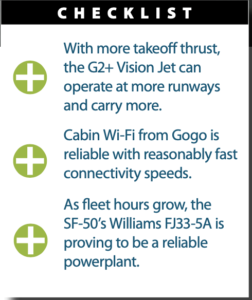
SAME ENGINE, MORE TECH
As it has been since day one, the G2+ Vision Jet is powered by a Williams International FJ33-5A turbofan that produces 1846 pounds of thrust. The -5A engine (certified in June 2016; the original FJ33 was certified in 2004) was designed for light jets in the 5000- to 9000-pound GTOW class. So far it’s been working quite we’ll in the Cirrus. Dispatch reliability has been good and while the little single-engine personal jet isn’t a speed demon among most new twin jets, it’s no slouch, either. It’ll do 300 knots true and cruise for 1000 nautical miles. Go slower (240 knots) and you can realistically stretch it 1200 nautical miles.
The engine, which has dual-channel FADEC or full authority digital engine control, has a 4000-hour TBO. When Cirrus tweaked the Vision Jet back in 2019, a major system included Garmin’s autothrottle, which plays an integral role with the Safe Return emergency landing system. In my estimation, the autothrottle is perhaps one of the most impressive (except for the Safe Return) and workload-reducing additions to the jet.
It really makes the airplane easier to fly—and it was easy to fly even before the autothrottle. You can bypass the autothrottle, of course, and it’s activated with a button to the left of the thrust lever, and a thumb wheel is used to dial in the speed you want the autothrottle to maintain. There’s deep integration with the avionics. Aside from Manual mode, the autothrottle interfaces with the Garmin G3000 Perspective+ system’s FMS via a mode selector button. In real-world ops, the FMS is likely the most common mode because it follows the active flight plan, setting the precise speeds for all phases of flight.
AIRFRAME AND SYSTEMS
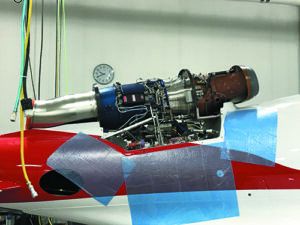
Aside from the markings, you’ll have to look closely at the G2+ to notice much difference from the original airplane. And it’s a Cirrus to the core, with a fuselage structure constructed primarily of carbon fiber. The forward part up to the aft cabin bulkhead station is fabricated separately and assembled in a fixture, as is the tailcone. The carbon fiber structure below the engine is covered by a titanium firewall.
The high aspect ratio carbon fiber wing structure houses the fuel bays (one in each wing) between the two spars, and each tank holds 148 usable gallons of Jet-A. The ailerons and wing flaps are aluminum and all of the control system components including the aileron push rods and flap torque tubes are routed along the rear side of the aft spar.
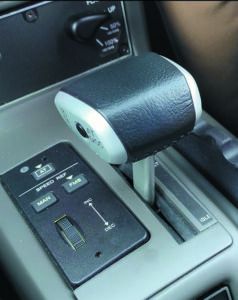
These later Vision Jets handle a bit better than the originals. Cirrus made some tweaks (starting with the G2 model) by ditching the boundary layer energizers (BLEs) that were intended to create a turbulent airflow over the wing so the flow doesn’t separate before hitting the ailerons. It was always good in the G1, but roll-axis handling feels even better without the BLEs. They’re replaced with a simple tab on the trailing edge of the ailerons, catching the airflow so the control surfaces remain as effective. Stall speed with the gear and flaps down at the 6000-pound MTOW is 67 knots.
Even though the Cirrus Jet is by now familiar to many in aviation circles, the G2+ attracts a lot of attention on the ramp because of the V-tail structure, along with two ventral fins that have attach points for the aircraft’s yaw stability augmentation system (yaw SAS) flight surfaces. The SAS system is controlled by an autopilot servo motor, and the control surface, which is hinged to the ventral fin, rotates asymmetrically to actively augment lateral and directional stability. The system shuts off when the autopilot yaw damper automatically engages above 200 feet. No, you generally won’t feel any tail-wagging like you might in a V-tail Bonanza thanks to that hard-working servo motor.
On the G2+ model, Cirrus added an external trim position indictor so you always know whether the ever-critical pitch trim is set for takeoff should the main indicator in the cockpit fail. Speaking of controls, the SF-50 uses control cables, pulleys, bell cranks, push rods and Cirrus signature outboard sidesticks equipped with four-way hat trim switches. Cirrus tried hard to design the cockpit of the Vision Jet so it’s an easier transition for pilots coming up the ranks from the SR piston line, which is the Vision’s core customer. While I think it succeeded, the Perspective+ avionics in the jet are different enough than the G1000-based system used in the pistons. Expect to focus a lot of time on the three-screen (with dual digital data controllers) avionics when you work through the type rating training for the jet. It’s a familiar, yet different, world in the Vision Jet, and as we’ve reported on in turbine upgrade articles, Cirrus takes transition training extremely seriously. See the latest turbine step-up article in the July 2021 Aviation Consumer.
FOOLPROOF, STILL
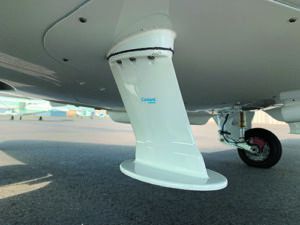
The latest G2+ Vision Jet continues the tradition of good Cirrus ergonomics, and while there’s a lot going on in the jet, some things are stone simple. That simplicity begins at engine start and to say it’s foolproof is an understatement, thanks to software-controlled dual igniters. Simply turn the engine start rotary knob to the Run position. That turns on the electric fuel boost pump. Press and release the Engine button in the middle of the rotary knob and the FADEC does the rest—from commanding the ignition to scheduling the flow of fuel once there’s sufficient N2 speed. The igniters shut off automatically when the computer senses a successful start.
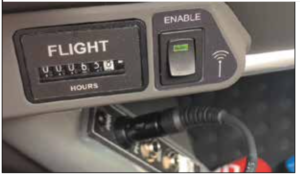
Any time I get in the Vision Jet I remember my shop maintenance days when I fretted the huge responsibility of firing up someone’s pricey turbine, and my eyes glued to the TIT. You still need to monitor the temps, of course, but on the Vision the FADEC automatically aborts a ground start if the TIT rises too quickly or if the engine fails to light and accelerate within preset time limits. If the system detects an engine flameout in flight, an auto-relight is initiated using both igniters. Foolproof.
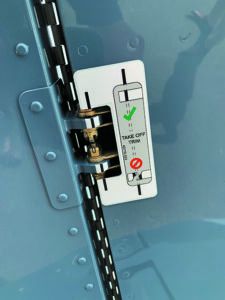
FLYING THE G2+
When I flew the G2+ with Cirrus’ Matt Bergwall, it was a hot summer day and a great opportunity to see just what the new airplane is intended to do: Get airborne and climb to clear a 50-foot obstacle with less ground roll than earlier models, which is a huge selling point for future Vision Jet owners. Even though the aircraft uses the same Williams engine, the boost in performance opens up the airplane to more runways and better loading. When I flew the G2+ in June 2021, Cirrus was waiting for the final type certificate, but it had been flying the airplane with the modified engine for a while and saw notable gains in performance, with nominal rises in engine TIT.
“We’ve seen anywhere from 4 percent all the way to 20 percent increases in takeoff and climb performance. That lower 4 percent is on runways where you really don’t need the extra takeoff performance as much, like at sea level airports and in colder conditions, but the 20 percent really matters the most,” Bergwall said. Of course he’s talking about high density altitude airports and when it’s hot and heavy.
In practical terms, Bergwall says that means in general the airplane can get out of 4000-foot runways in just about all weather conditions in the Northeast, as one example. Out west, the extra boost adds sizable utility when the temperature is hot and the jet is fully loaded. That means as much as 500 pounds more payload or more fuel. Take your pick. Vision Jet pilots are accustomed to 2499 pounds of useful load, and a cabin payload with fuel (296 gallons usable) of 498 pounds.
On my demo, we used Hartford Brainard Airport’s Runway 20 in central Connecticut, with a published length of 4545 feet. For the older Vision G2, the Perspective+ avionics computed a takeoff run of 2846 feet over a 50-foot obstacle. Bergwall estimated the extra takeoff power could shorten that ground run by around 500 feet. It was a hot 90-degree day with a 1720-foot density altitude. Loaded with four average-size adults and 220 gallons of Jet-A, the computer said we were at 5900 pounds.
There is nothing the pilot needs to do to tweak more thrust from the Williams engine because the FADEC does it all, after you enter the data before taxiing. Once the numbers are in, the FADEC simply computes the best takeoff thrust based on temperature, pressure altitude, loading and the runway data that’s in the database.
With the power lever in the takeoff detent and wing flaps set in the 50-degree takeoff position, you wait for the 90-knot rotation speed before rotating the airplane and pitching to a positive-rate climb, and then retract the landing gear. The flight director shows a 5-degree pitch-up reference and you clean up the flaps at 115 knots. The yaw damper comes on automatically at 200 feet, and if you hold the flight director command bar’s pitch attitude, you’ll climb at 155 knots.
While the Vision Jet is no short-field star, the tweaked Williams should serve it well. On my demo, it shortened the ground run by 500 feet (we used 2200 feet before rotating), compared to the older airplane, and it took 3700 feet of runway to clear a 50-foot obstacle.
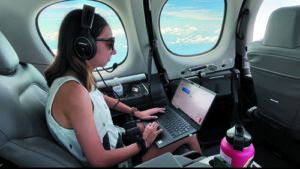
When I told my boss I wanted to ditch a morning of remote meetings to tag along on the Cirrus G2+ Vision Jet flight demo (I had flown in the previous-gen airplanes), the blow was softened a bit when I mentioned I would have internet access and could get some work done on the flight. “Don’t worry, I’ll take a photo of the company intranet amongst the clouds,” I told her. Unlike other cabin Wi-Fi demos I’d been on, the Gogo Avance L3 cabin Wi-Fi in the Cirrus backstopped my credibility. Once we hit 10,000 feet and the guys up front switched on the system, I easily and quickly joined on, connecting via the network “GogoWiFi.”
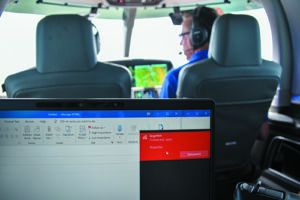
Surprisingly, doing a send/receive of my email inbox updated about as quickly as it does in my office on the ground. I responded to a few meeting invites and emails, and then opened up a web browser. Surfing the internet was just as smooth, as I navigated around various websites filled with heavy data loads, like large photos and video.
The Vision Jet also has a drop-down screen in the back cabin that passengers can connect their devices to. Add in the Gogo Wi-Fi connection, and passengers can easily stream content onto the screen to watch during the flight, although reliable video streaming may be a stretch.
Vision Jet cabin dwellers will recognize the Gogo name because the company (which originally started as Aircell) has a long partnership with a long list of commercial airlines.
Unlike other systems, Gogo’s tech connects users to the ground-based network that is strongest—not necessarily the closest—as they travel, in hopes of a steady connection throughout the flight. It’s an advantage over other ground-based comm systems. On our flight there were a total of five devices connected to Gogo at once.
Based on my experience, and even at the Wi-Fi’s 3G-like speeds, the Gogo system adds welcomed utility to the Vision Jet’s cabin, especially for business travelers who need to stay connected while riding in the little jet.
—Ashley Anglisano
EASY UPGRADES
Easy is a relative term, of course, but Cirrus is planning to offer the increased takeoff performance for many of the existing Vision Jets in service. It’s a bit more than loading new software into the FADEC, but it doesn’t require an engine swap. That’s good. Moving forward, all new Visions will be delivered as the G2+, with the added performance, plus an option (roughly $60,000) for the Gogo Avance L3 cabin Wi-Fi. Owners who opt for the Wi-Fi can select from a variety of data plans—and the convenience comes at a premium. Visit www.business.gogoair.com for a rundown.
Typically, fully loaded G2+ Vision Jets will go out the door priced at $2.96 million. This of course includes the Safe Return emergency landing system. Want one? Get in line. Cirrus says demand (like it is for the SR piston line) remains high. Moreover, with close to 300 Visions already delivered since the beginning, I spotted a handful of older models for sale on the used market. They bring top dollar.
For instance, the reputable Lone Mountain Aircraft, a Cirrus pre-owned resale partner, was offering a 2019 G2 Vision for $2.95 million with 462 hours total time. A 2018 Vision with 364 hours was priced at $2.32 million. There are others for sale, but likely not for long. Like any late-model Cirrus, they sell fast.
Visit www.cirrusaircraft.com.

